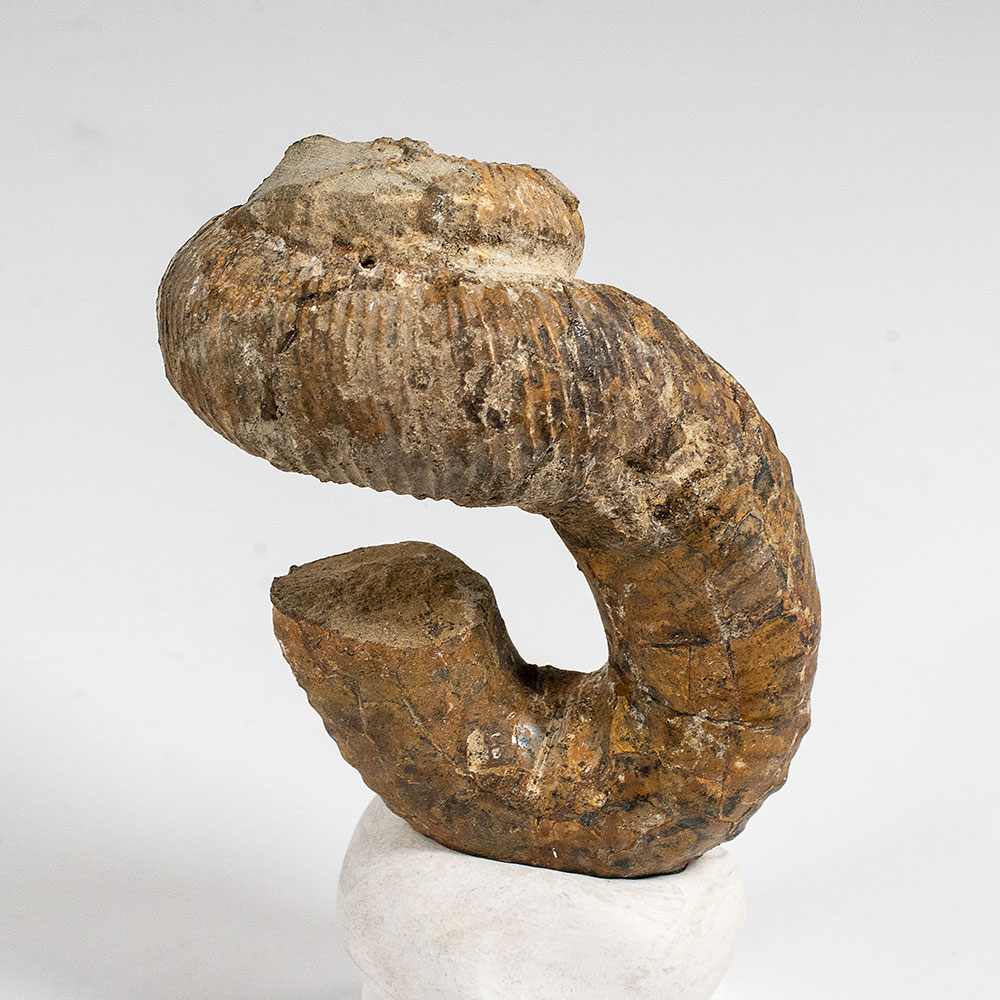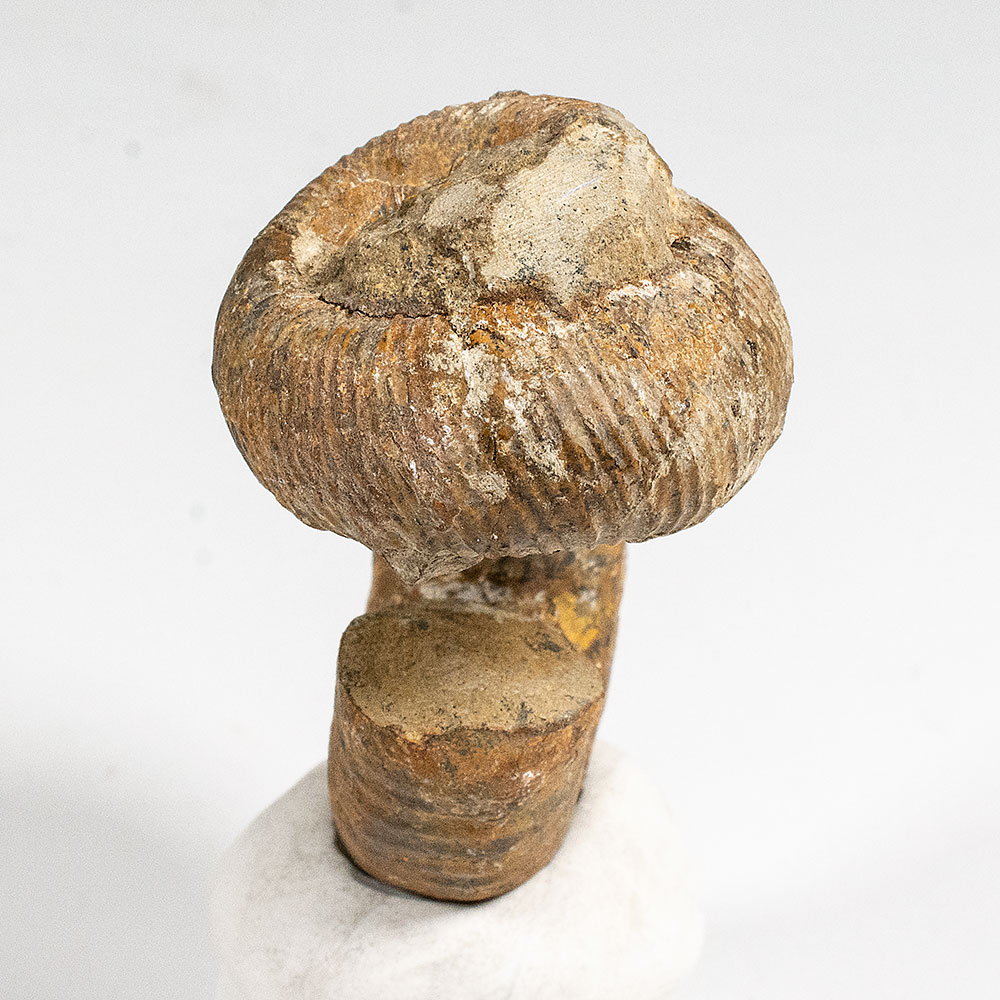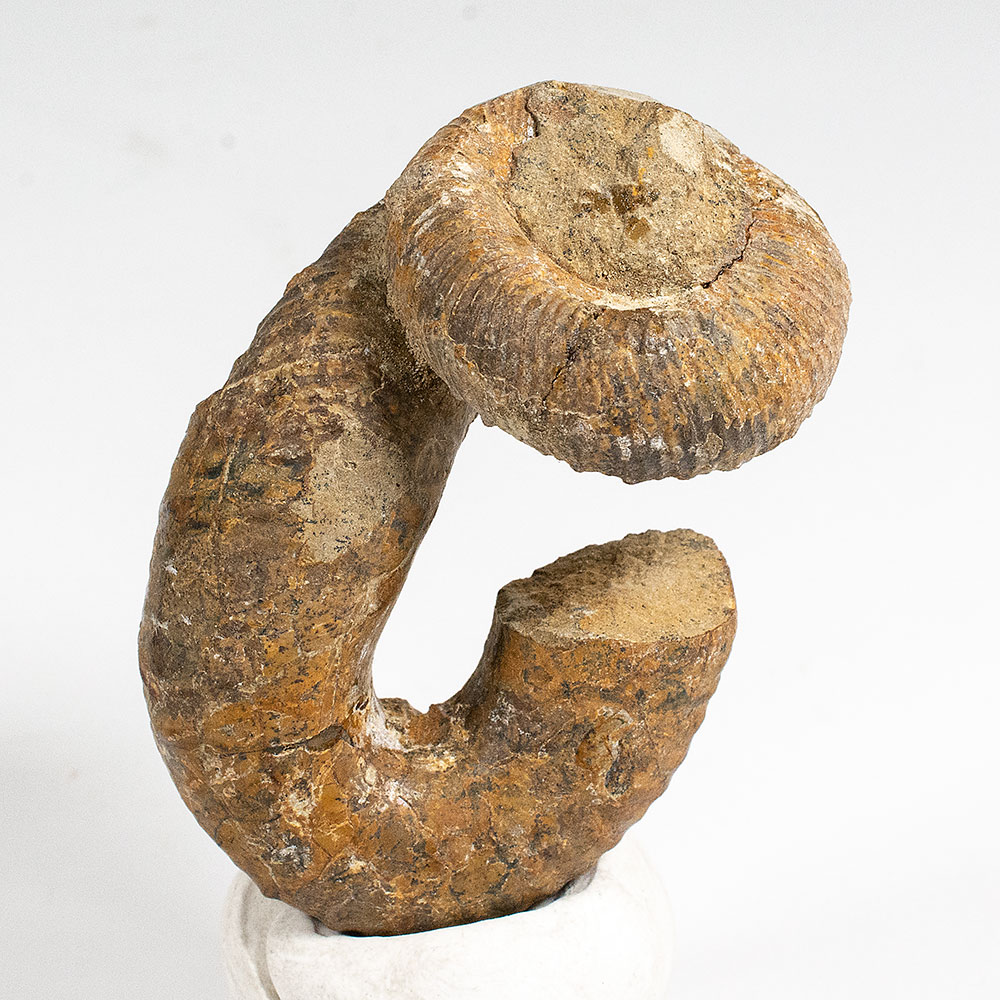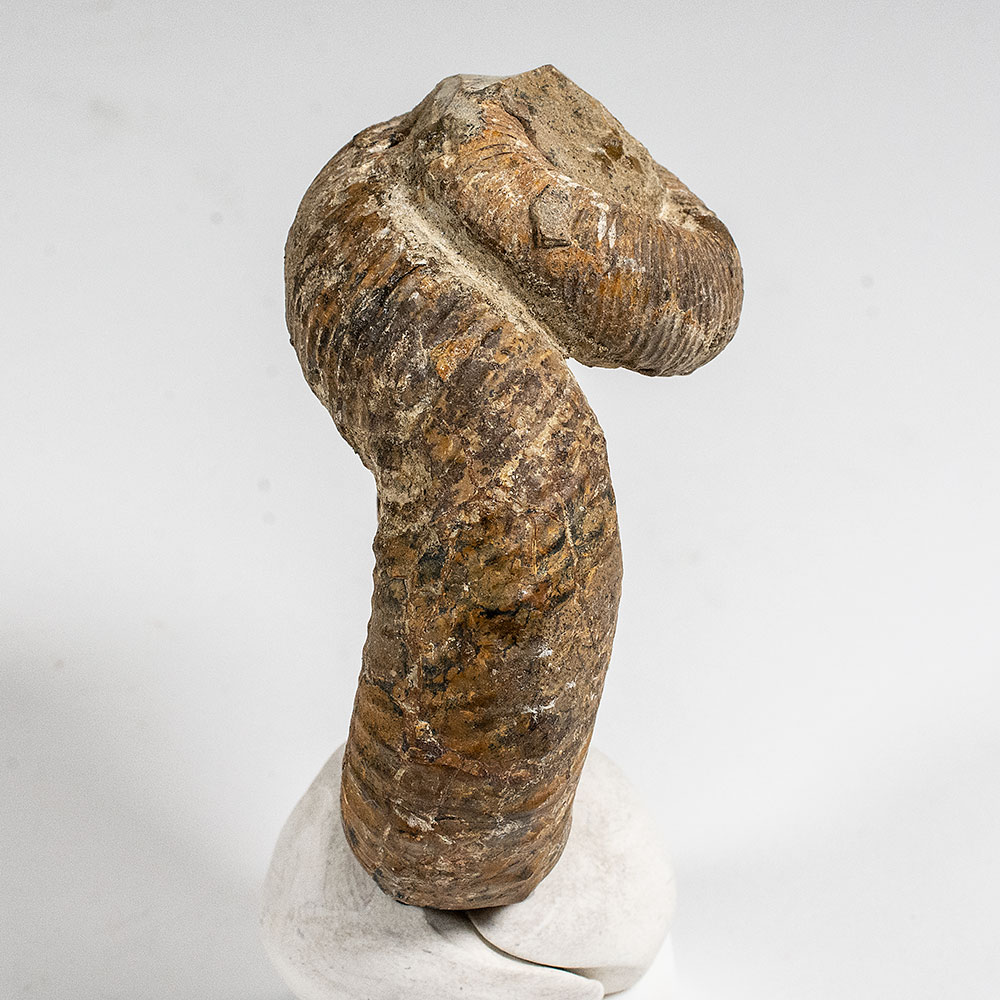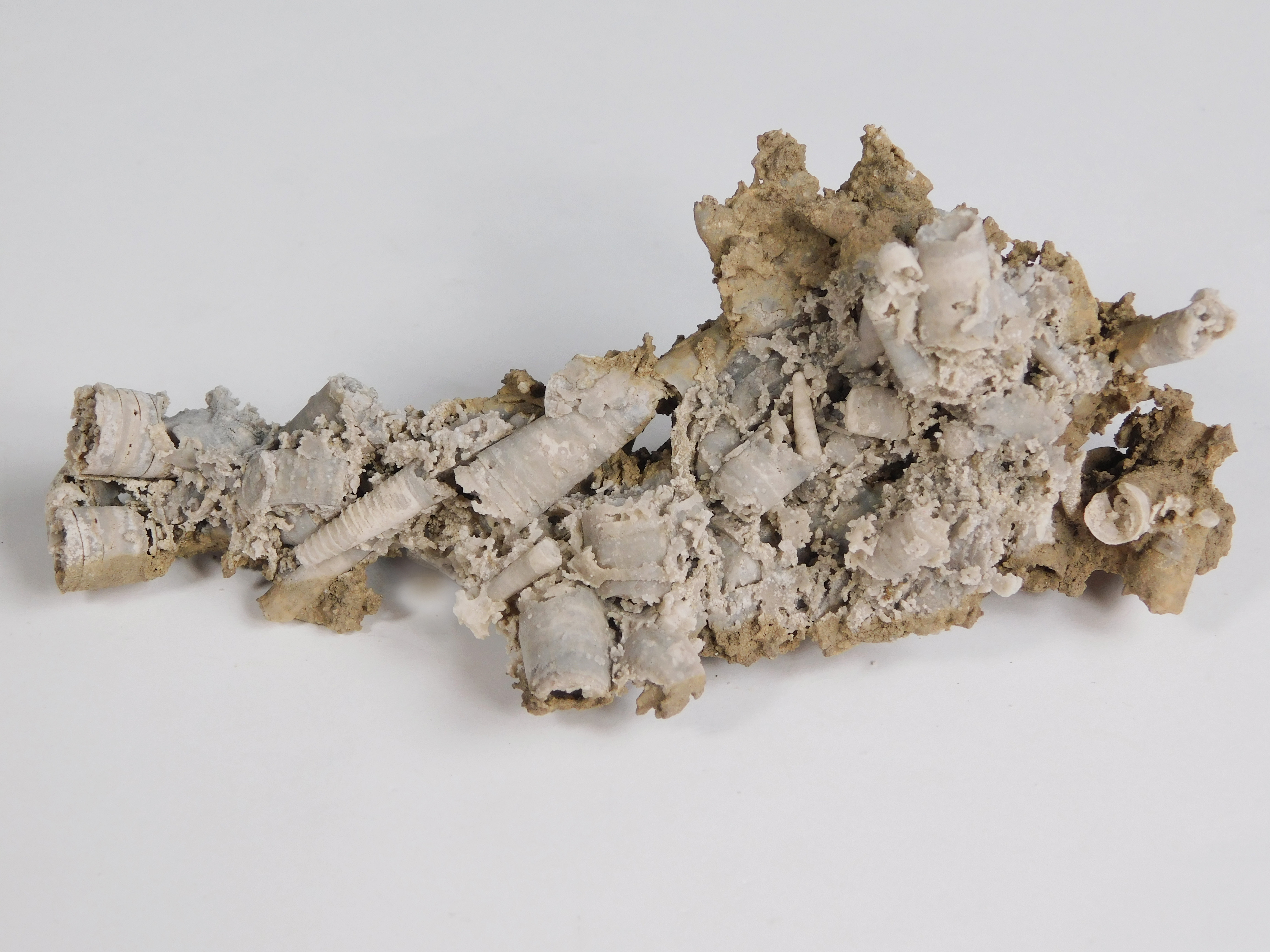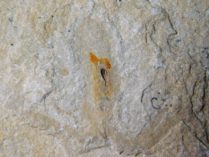Description
Nostoceras malagasyense (Collignon 1971)
Late Cretaceous (Campanian)
Belo Tsiribihina, near Tulear, Madagascar
86mm heteromorph.
Nostoceras malagasyense is an extinct species of heteromorphic ammonite that lived during the Late Cretaceous period, approximately 70 to 66 million years ago.The shells of Nostoceras malagasyense are highly ornamented with distinctive, intricate patterns of ridges and nodes that make them highly prized by collectors. The shell can reach up to 50 centimeters (20 inches) in diameter, and it has a characteristic keel or ridge that runs along the outer edge of the shell.
Nostoceras malagasyense was first discovered in Madagascar, but its fossils have also been found in other parts of the Indian Ocean, including India and Oman. Its distribution suggests that it was a widespread species that lived in shallow marine waters.
Like other ammonites, Nostoceras was a carnivorous predator that likely fed on small marine animals, such as crustaceans and fish. It had tentacles that it used to capture prey, and a beak-like mouth that it used to crush and consume its food.
The extinction of Nostoceras and other ammonites occurred at the end of the Cretaceous period, possibly due to a combination of factors including climate change, volcanic activity, and a catastrophic asteroid impact that caused a mass extinction event.

